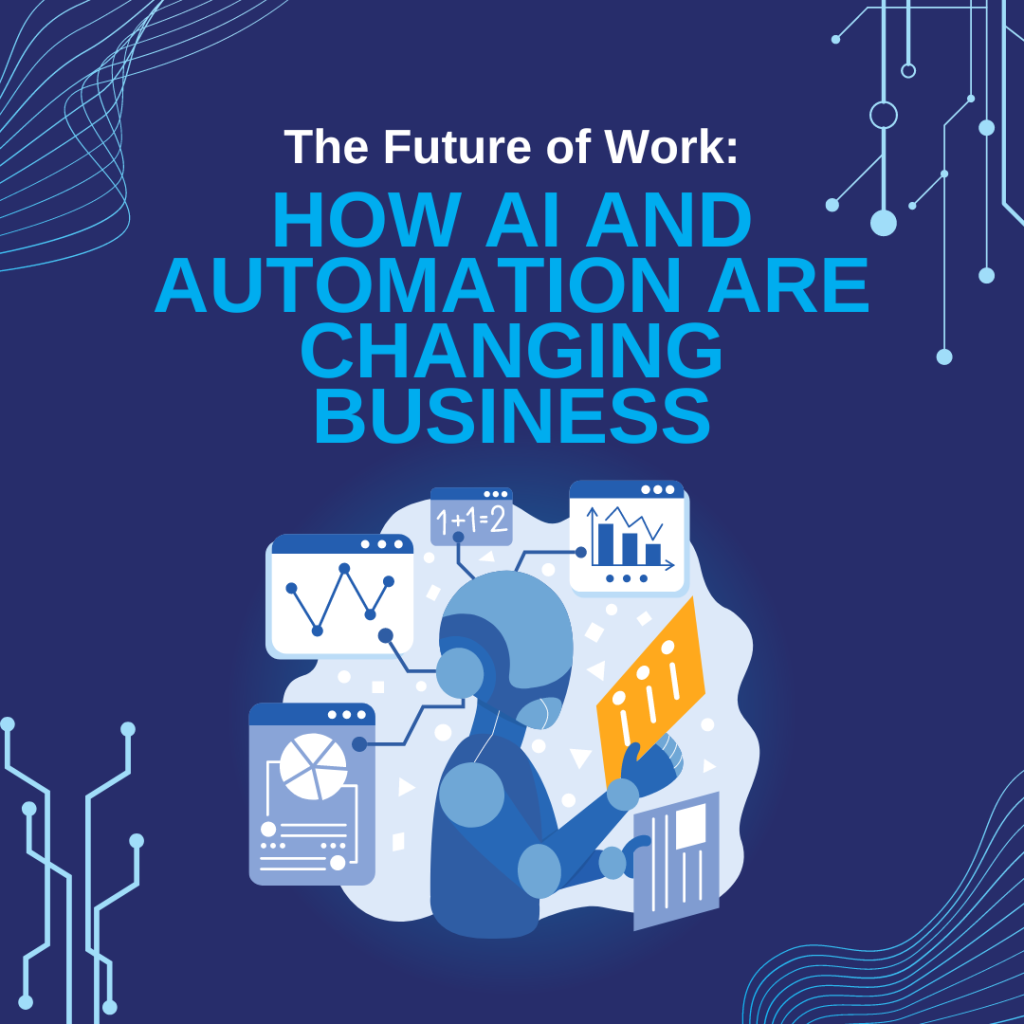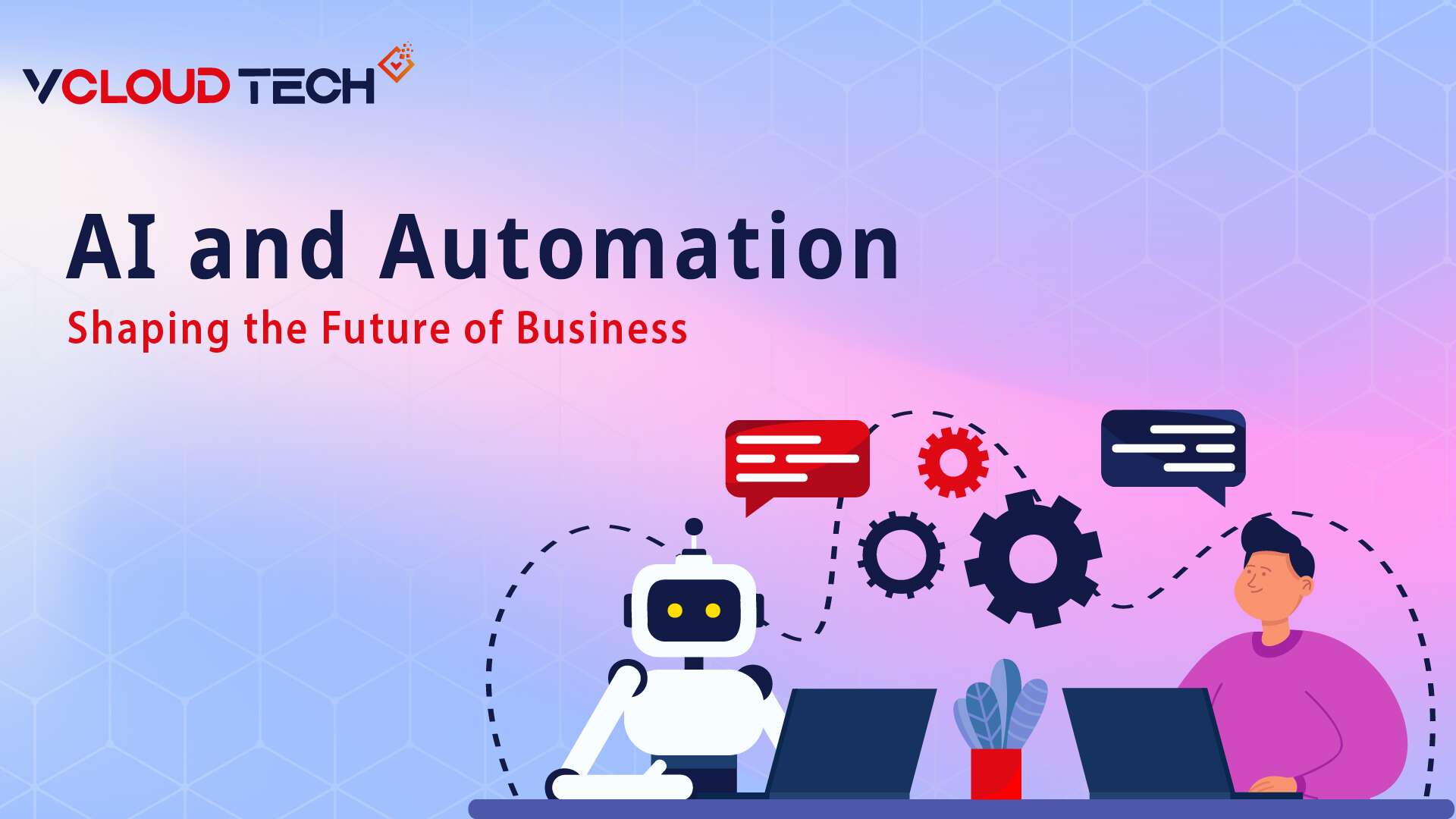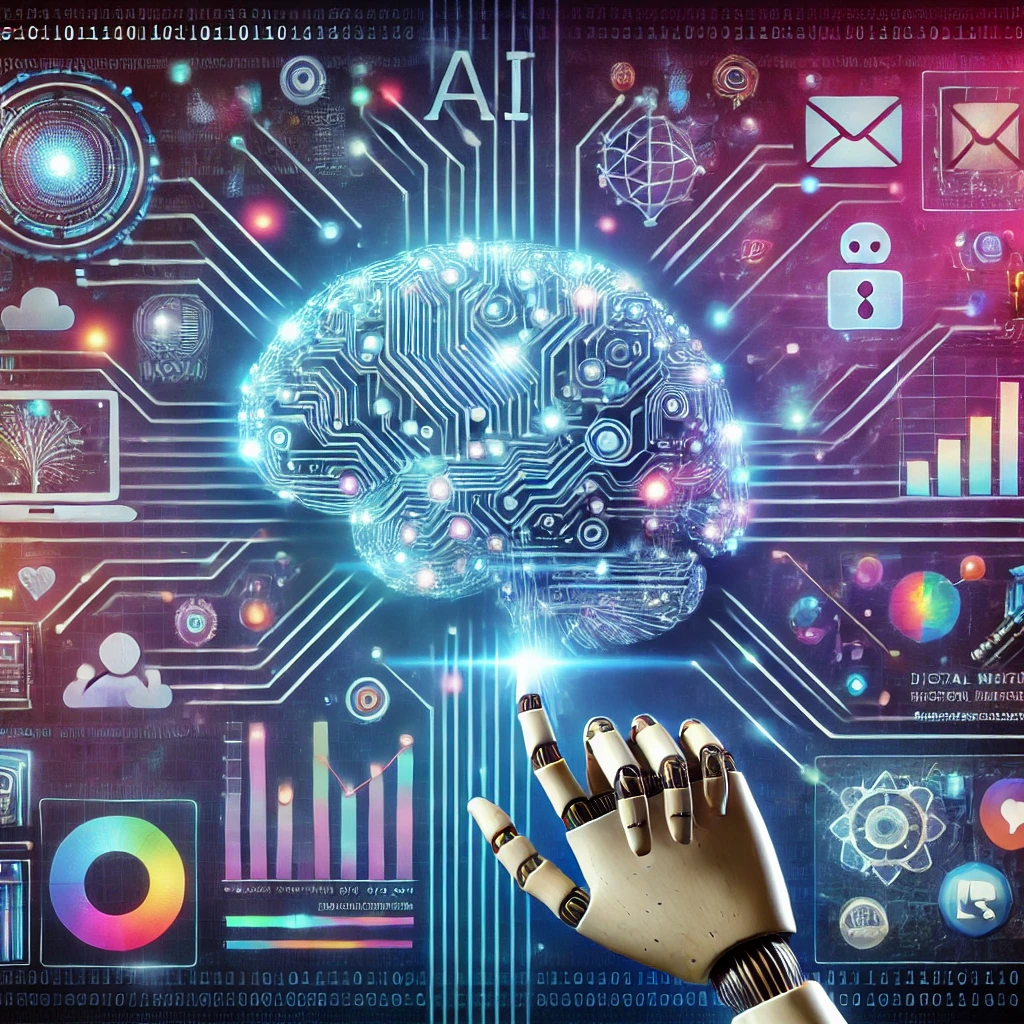Introduction: The AI Revolution Accelerates

The future of artificial intelligence is reshaping how we work and live
The artificial intelligence landscape has undergone unprecedented transformation in 2024, with adoption rates skyrocketing across industries and new breakthrough technologies emerging at an exponential pace. What began as experimental implementations of AI tools has evolved into comprehensive business transformation strategies that are fundamentally reshaping how organizations operate, compete, and deliver value to customers.
Key Statistics That Define 2024's AI Boom
- 71% of organizations now regularly use generative AI (up from 33% in 2023)
- 78% of companies use AI in at least one business function
- 40% expected improvement in employee productivity through AI implementation
- $47.1 billion projected AI agent market value by 2030
This comprehensive analysis explores the most significant AI trends shaping 2024 and 2025, examining how businesses worldwide are leveraging artificial intelligence to drive innovation, enhance productivity, and create competitive advantages. From generative AI's mainstream adoption to the emergence of autonomous AI agents, we'll uncover the technologies and strategies that are defining the future of work.
"We are witnessing the most significant technological shift since the internet revolution. AI is not just changing how we work—it's redefining what work means in the 21st century."
The Generative AI Adoption Surge

Generative AI by the Numbers
Mainstream Business Integration
According to the latest McKinsey Global Survey on AI, generative artificial intelligence has moved from experimental phase to mainstream business integration with remarkable speed. The technology's adoption rate has more than doubled in just one year, with organizations discovering practical applications across virtually every business function.
Industry-Specific Applications
Marketing & Sales
- • Content generation at scale
- • Personalized customer communications
- • Lead scoring and qualification
- • Dynamic pricing optimization
Operations
Software Development
Content Modalities Beyond Text
While text generation remains the most common application at 63% of organizations, businesses are rapidly expanding into multimodal AI capabilities. More than one-third now generate images, over 25% create computer code, and emerging applications include audio, video, and 3D model generation. This diversification reflects the technology's maturation and businesses' growing confidence in AI-generated content quality.
Workplace Automation & The Rise of AI Agents

AI agents are transforming workplace dynamics and task automation
The Autonomous Agent Revolution
The emergence of AI agents represents perhaps the most significant workplace transformation since the introduction of personal computers. These autonomous systems can plan, execute, and adapt their actions to achieve specific goals, fundamentally changing how work gets done across industries.
Key Characteristics of Modern AI Agents
Autonomous Decision Making
Ability to analyze situations, weigh options, and make decisions without constant human oversight.
Continuous Learning
Adaptation and improvement based on experience, feedback, and changing conditions.
Multi-Agent Collaboration
Coordination with other AI agents and human team members to achieve complex objectives.
Real-Time Processing
Instantaneous response to changing conditions and immediate task execution.
Market Growth Projections
The global AI agent market is experiencing unprecedented growth, with projections showing an increase from $5.1 billion in 2024 to approximately $47.1 billion by 2030. This exponential growth reflects the technology's proven value in enhancing operational efficiency and enabling new business models.
Impact on Different Job Functions
Functions Expecting Workforce Reduction
- Service OperationsHigh Impact
- Supply Chain ManagementHigh Impact
- Customer ServiceMedium Impact
- Data Entry & ProcessingHigh Impact
Functions Expecting Workforce Growth
- IT & Software DevelopmentHigh Growth
- Product DevelopmentMedium Growth
- AI Strategy & ImplementationHigh Growth
- Data Science & AnalyticsHigh Growth
Reskilling and Workforce Development
Organizations are increasingly investing in workforce reskilling programs, with many companies reporting significant retraining initiatives to help employees adapt to AI-enhanced work environments. The focus is shifting toward developing uniquely human skills such as critical thinking, emotional intelligence, and creative problem-solving that complement AI capabilities rather than compete with them.
Measuring Business Impact & Return on Investment

Organizations are seeing measurable returns on AI investments across industries
Revenue Impact and Cost Reduction
The latest research indicates that organizations are beginning to see tangible financial benefits from their AI investments. Companies report both direct revenue increases and significant cost reductions, with larger organizations leading in both metrics due to their more comprehensive AI implementation strategies.
Implementation Success Factors
Research has identified 12 key practices that correlate with successful AI implementation and measurable business impact. Organizations following these best practices are significantly more likely to see positive ROI from their AI investments.
Top Implementation Practices
KPI Tracking
Establishing well-defined key performance indicators for AI solutions shows the strongest correlation with bottom-line impact.
Clear Roadmap
Defined implementation roadmaps with phased rollouts across teams and business units.
Dedicated Teams
Specialized project management offices focused on AI adoption and transformation.
Training Programs
Role-based capability training courses ensuring appropriate use of AI tools at each organizational level.
Risk Management
Comprehensive approaches to identify, assess, and mitigate AI-related risks.
Trust Building
Strategies to foster customer and stakeholder trust in AI implementations.
Enterprise vs. Small Business Adoption
Significant differences exist between large enterprises and smaller organizations in AI adoption approaches. Companies with over $500 million in annual revenue are implementing more comprehensive strategies, following more best practices, and consequently seeing greater returns on their AI investments.
AI Ethics, Governance & Regulatory Landscape

Establishing ethical frameworks for responsible AI development and deployment
Global Regulatory Developments
2024 has marked a turning point in AI regulation, with the European Union's AI Act leading the charge as the world's first comprehensive AI regulatory framework. This legislation has created a precedent that other regions are following, establishing risk-based approaches to AI governance that balance innovation with safety and ethical considerations.
Key Regulatory Milestones in 2024
- EU AI Act Implementation: Risk-based classification system for AI applications with specific requirements for high-risk use cases
- US Executive Orders: Federal guidelines for AI safety, security, and trustworthiness across government agencies
- UK AI Regulation Approach: Principles-based framework emphasizing sector-specific guidance and industry self-regulation
- International Standards: ISO/IEC development of global AI management and governance standards
Corporate Governance Strategies
Organizations are establishing comprehensive AI governance frameworks to ensure responsible development and deployment. These frameworks typically include ethical guidelines, risk assessment procedures, and oversight mechanisms that involve senior leadership and board-level supervision.
Governance Structure Elements
- Executive AI Oversight Committees
- Cross-functional Risk Assessment Teams
- Ethics Review Boards
- Compliance Monitoring Systems
- Stakeholder Engagement Protocols
Risk Mitigation Focus Areas
- Data Privacy and Security
- Algorithmic Bias Prevention
- Intellectual Property Protection
- Content Accuracy and Reliability
- Transparency and Explainability
Emerging Compliance Roles
The regulatory landscape has created demand for new specialized roles within organizations. AI compliance specialists and AI ethics officers are becoming integral parts of corporate AI teams, ensuring that implementations meet both regulatory requirements and organizational ethical standards.
"Responsible AI governance isn't just about compliance—it's about building sustainable competitive advantages through trustworthy, ethical AI implementations that stakeholders can rely on."
Emerging Trends & Technologies Shaping 2025

Next-generation AI technologies are pushing the boundaries of what's possible
Small Language Models and Edge Computing
One of the most significant trends emerging in late 2024 is the shift toward smaller, more efficient AI models that can run on edge devices. Small Language Models (SLMs) are revolutionizing AI deployment by bringing advanced capabilities directly to end-user devices, reducing latency, improving privacy, and decreasing operational costs.
Edge AI Benefits
- • Reduced latency and faster response times
- • Enhanced data privacy and security
- • Lower bandwidth requirements
- • Offline capability and reliability
- • Cost-effective deployment at scale
Device Integration
- • Smartphones and tablets
- • IoT sensors and devices
- • Autonomous vehicles
- • Industrial equipment
- • Smart home systems
Performance Gains
- • 10x faster processing for specific tasks
- • 50-80% reduction in energy consumption
- • 90% lower deployment costs
- • Near-zero latency for critical applications
- • 24/7 availability without cloud dependency
Agentic AI and Autonomous Systems
The evolution toward agentic AI represents the next major frontier in artificial intelligence development. These systems can operate independently, make complex decisions, and adapt to changing circumstances without constant human oversight, opening possibilities for fully autonomous business processes.
Characteristics of Agentic AI Systems
Autonomous Reasoning
Advanced reasoning capabilities that allow systems to understand context, evaluate options, and make informed decisions.
Dynamic Learning
Continuous adaptation and improvement based on experience and feedback loops.
Multi-Agent Coordination
Seamless collaboration between multiple AI agents to accomplish complex, multi-step objectives.
Goal-Oriented Behavior
Persistent pursuit of specified objectives with the ability to adapt strategies as conditions change.
Multimodal AI Integration
The convergence of text, image, audio, and video processing capabilities within single AI systems is creating new possibilities for natural, intuitive human-AI interaction. This multimodal approach is enabling more sophisticated applications that can understand and respond to complex, real-world scenarios.
Quantum-AI Convergence
Early-stage developments in quantum computing are beginning to intersect with AI research, promising exponential improvements in processing power for specific AI algorithms. While still in experimental phases, quantum-enhanced AI could revolutionize optimization problems, cryptography, and complex system modeling.
Strategic Implementation Best Practices

Strategic planning is essential for successful AI implementation and ROI realization
Organizational Readiness Assessment
Before implementing AI technologies, organizations must evaluate their current capabilities, infrastructure, and cultural readiness. This assessment helps identify gaps and opportunities for improvement while establishing realistic timelines and expectations for AI adoption.
Technical Readiness Factors
- Data Quality & Availability
Clean, well-organized datasets that can train and validate AI models effectively
- Infrastructure Scalability
Computing resources and cloud capabilities to support AI workloads
- Security Framework
Robust cybersecurity measures to protect AI systems and data
Organizational Readiness Factors
- Leadership Commitment
Executive support and vision for AI transformation initiatives
- Workforce Skills
Employee capabilities and willingness to adapt to AI-enhanced workflows
- Process Maturity
Well-defined business processes that can benefit from AI optimization
Phased Implementation Strategy
Successful AI adoption typically follows a structured, phased approach that allows organizations to learn, adapt, and scale gradually. This methodology reduces risk while building organizational confidence and expertise.
Phase 1: Foundation & Pilot Projects (3-6 months)
Establish AI governance, select high-impact use cases, and launch small-scale pilot projects to demonstrate value and build internal capability.
- Form AI steering committee and governance structure
- Identify 2-3 low-risk, high-value pilot use cases
- Develop initial AI ethics and safety guidelines
- Begin staff training and change management
Phase 2: Expansion & Integration (6-12 months)
Scale successful pilots across departments, integrate AI into core business processes, and develop comprehensive measurement frameworks.
- Roll out successful pilots to additional business units
- Implement comprehensive KPI tracking systems
- Establish center of excellence for AI development
- Expand training programs and capability building
Phase 3: Optimization & Innovation (12+ months)
Achieve enterprise-wide AI integration, pursue advanced applications like agentic AI, and drive continuous innovation through AI-enabled business models.
- Deploy advanced AI agents for complex workflows
- Develop proprietary AI capabilities and competitive advantages
- Create AI-native business processes and revenue streams
- Establish industry partnerships and ecosystem relationships
Change Management and Cultural Adaptation
The human element often determines the success or failure of AI implementations. Organizations must invest in comprehensive change management programs that address employee concerns, provide adequate training, and create enthusiasm for AI-enhanced ways of working.
Frequently Asked Questions
What is the difference between AI and generative AI?
Traditional AI focuses on analyzing data and making predictions or classifications, while generative AI creates new content such as text, images, code, or audio. Generative AI uses large language models and other advanced architectures to produce human-like outputs based on prompts or instructions.
How long does it typically take to see ROI from AI investments?
ROI timelines vary significantly based on use case complexity and organizational readiness. Simple automation projects may show returns within 3-6 months, while comprehensive AI transformations typically require 12-18 months. Organizations following best practices and having strong leadership commitment tend to see faster returns.
What are the biggest risks associated with AI implementation?
The most commonly reported risks include data inaccuracy, cybersecurity vulnerabilities, intellectual property concerns, privacy violations, and algorithmic bias. Organizations should establish comprehensive risk management frameworks and regularly audit AI systems for potential issues.
Will AI replace human jobs or create new opportunities?
Research suggests AI will transform rather than simply replace jobs. While some routine tasks will be automated, AI is creating new roles in AI development, ethics, compliance, and human-AI collaboration. The key is proactive reskilling and adapting to AI-augmented work environments.
How should small businesses approach AI adoption?
Small businesses should start with readily available AI tools for specific functions like customer service, marketing, or accounting. Focus on solutions that require minimal technical expertise and provide immediate value. Consider cloud-based AI services that don't require significant infrastructure investment.
What regulations should organizations be aware of?
Key regulations include the EU AI Act (comprehensive AI governance), various data protection laws (GDPR, CCPA), and emerging sector-specific guidelines. Organizations should stay informed about local regulations and implement proactive compliance measures rather than waiting for mandatory requirements.
Summary: Embracing the AI-Powered Future
The AI revolution of 2024-2025 represents more than technological advancement—it's a fundamental shift in how businesses operate, compete, and create value. Organizations that proactively embrace AI technologies, implement robust governance frameworks, and invest in workforce development are positioning themselves for unprecedented growth and innovation.
The key to success lies not just in adopting AI technologies, but in understanding how to integrate them strategically into existing business processes while maintaining ethical standards and regulatory compliance. As we move into 2025, organizations must balance innovation with responsibility, ensuring that AI implementations create value for all stakeholders.
Ready to Transform Your Business with AI?
Stay ahead of the curve with expert insights, implementation strategies, and the latest AI trends delivered directly to your inbox.
Join 50,000+ business leaders staying informed about AI trends and best practices.
